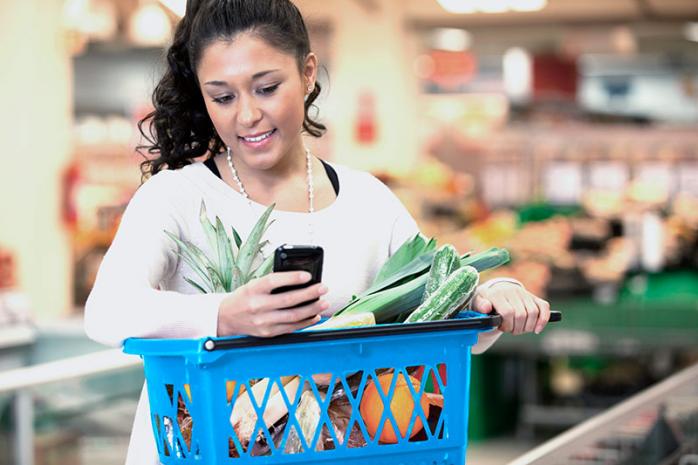Despite the march of technology, what shoppers want hasn’t changed. Shoppers have seven desires:
1. Simplicity
2. Quick and efficient service
3. Relevance
4. Value
5. Choice
6. Indulgences
7. Sense of belonging
We see these desires validated by retailers who have succeeded by grabbing onto one of more of these forces. Staples…’that was easy’. Zappos loves servicing customers. Amazon…amazing personalization of the shopping experience (=relevance) and unlimited choice. In fact, online shopping in general gives unprecedented choice—of offerings, of shopping hours and that is a main driver of rapid growth year after year. Walmart owns value. Target has created a shopping experience based on masstige indulgences. Starbucks and Apple are the mavens of creating a sense of belonging in their stores.
However, the game is changing for what retailers must do to give shoppers what they want. In a digital, social, and mobile society, shoppers’ path to purchase usually involves online and offline activities, across all screens, irrespective of where the purchase occurs. Seamless experiences and leveraging what is learned as shoppers go on their journey is critical for a retailer to win the purchase and build the relationship. Retailers must master digital technology in five ways to succeed.
· Connecting online and offline. Retailers must stop hiding behind their organization structures and inventory management systems and offer a true omnichannel experience. They currently struggle to link digital behaviors to in-store purchasing and to link digital behaviors across screens (‘search on mobile but buy on the computer’ looks like a search that didn’t produce a sale and a sale that occurred without marketing influence.) Some retailers still offer different pricing online vs. in their stores. The future is for retailers to follow the multi-screen and online/offline shopping behaviors of shoppers and integrate across screens and in the store. Same prices, connected experiences via shopper IDs and profiles, inventory that is searchable and buyable online with store pickup.
· Digitalizing the store. Retailers should work towards a future state where the store has free WiFi for any shopper with a frequent shopper number that automatically logs in as they enter a store via their smartphone, tablet or wearable technology (Google glasses, Apple watch). The shopping list built online at home is automatically reorganized according to store layout. The shopper can have relevant offers pushed to them as they shop an aisle. Digitizing the store also allows the retailer to extend the offerings by virtual means as Tesco did in South Korea. Finally, digital wallets and scanning purchases as you shop will eliminate the dreaded check-out line.
· Mastering data on shopper behaviors and predictive analytics. Shoppers want ideas and discounts that are relevant to them, rather than a blizzard of offers. DunnHumby made Tesco the number one grocery retailer in the UK by leveraging frequent shopper data. Catalina serves up offers to shoppers at checkout that are driven by brand preferences and predictions of the upcoming purchase in a category based on modeling purchase cycles.
· Media. Retailers not only have customers, they have audiences. Their websites often attract massive audiences, and their in-store traffic can exceed TV network reach. Advertising on retail webpages, e.g. a Maytag ad on a Best Buy page for laundry products, is hyper-relevant and therefore more likely to pay out for both Maytag and Best Buy.
· Make shopping social. Imagine pinning images of products you desire onto a Pinterest wish list which is then shared via Facebook. You can browse the Pinterest boards of your friends for ideas for you or gifts for them. In fact, Facebook has been testing a “want” button for about a year.
So let’s imagine the Jetsons are planning a grocery shopping trip at their local Space n’ Shop.
Jane starts by opening the S n’ S shopping app and decides on supper so the ingredients are automatically added to a list that includes those items she regularly buys that she is modeled to be running low on. Jane browses the virtual store that has been designed around her health and wellness preferences. She adds a few more items. Elroy logs into the account so he can add his fix of salty snacks to the list. Jane asks George to do the shopping. No problem; the list appears as he enters the store and is reorganized by store layout to make it easy for him. His smartglasses use augmented reality to alert him to each item on the list as he navigates the store. The right lens alerts him to offers and other interesting products he might want to consider. Having activated “smartpay”, as he ‘looks’ each product into his cart with his smartglasses, it is automatically debited against his digital wallet on file with Space n’ Shop. No need to wait on line to check-out; he goes out the door which senses that he used smartpay. As he leaves, he gets a personalized thank you along with a free beverage of his choice for using smartpay by looking at the machine with his smartglasses and speaking his beverage preference. For $1 off, George opts to have an automatic post on Facebook about how much he loves using ‘smartpay’ at Space n’ Shop.
By harnessing digital technology, retailers can deliver on all 7 of Jane and George’s shopper desires. Why would Jane and George want to shop anywhere else?

